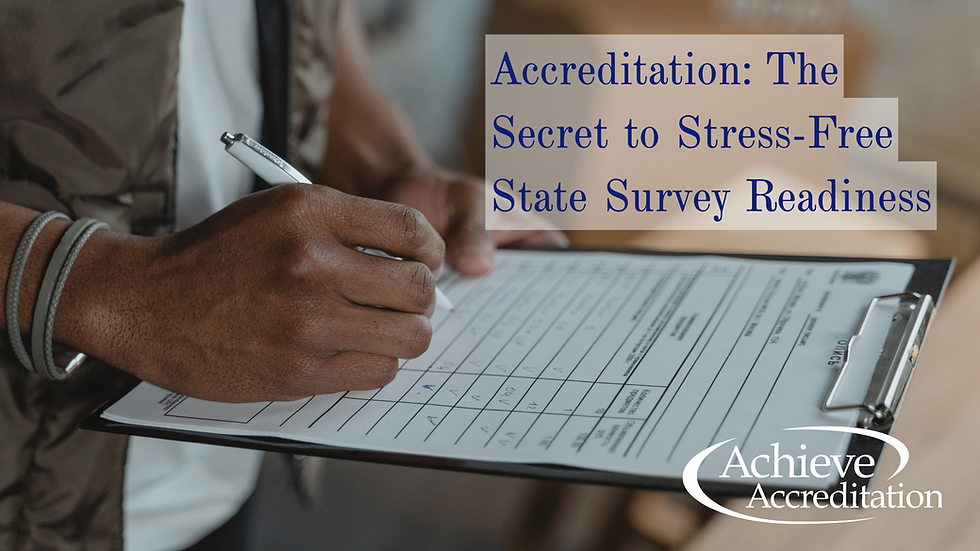Accreditation: The Secret to Stress-Free State Survey Readiness
- Kathleen O'Connor
- Aug 12
- 2 min read

If you have ever been through a state survey in senior living, you know the feeling of scrambling to get records in order, rushing to refresh staff on policies and procedures, and hoping that nothing falls through the cracks. But here is the thing: it doesn’t have to be that way.
For communities that are accredited, survey readiness is built into everyday operations. Instead of a yearly sprint, accreditation creates a continuous cycle of compliance and quality improvement. Below, we will explore how accreditation transforms survey preparations from stressful to seamless and why it’s one of the smartest investments a senior living provider can make.
1. Continuous Compliance—No More “Survey Cramming”
Many communities scramble to prepare in the weeks leading up to a state survey. Accreditation changes by requiring ongoing adherence to the highest industry standards. Everything from policies to resident records stays up-to-date year-round, so when the state walks in, you’re ready with no panic required.
2. Standards That Go Beyond the Minimum
State requirements focus on core regulations: safety, staffing, resident rights, and infection control. Accreditation standards include all of that but also include best practices that go a step further, like quality metrics, resident outcome tracking, and implemented performance improvement plans.
3. Organized Policies and Documentation
When surveyors ask for a record, you don’t want to be hunting for information. Accreditation ensures policies are standardized and reviewed regularly. Accrediting bodies also use “tracer” methodology which means following a resident’s experience through documentation so state survey readiness falls in line.
4. Confident, Well-Trained Staff
Accredited communities regularly conduct mock surveys, drills, and skill checks. This means staff are comfortable answering surveyor questions and demonstrating procedures correctly, because they have been continuously practicing with everyday readiness.
5. Issues Caught Early Through Quality Improvement
Accreditation requires proactive monitoring of metrics like falls, infection rates, and satisfaction surveys. This helps leaders spot problems early and fix them, long before a state surveyor could cite them.
6. Better Relationships with Regulators
Accredited communities often have fewer deficiencies, smoother inspections, and a reputation for quality. The continuous quality improvement approach creates an ongoing quality and safety culture.
The Bottom Line
Accreditation takes the guesswork out of survey preparations. It’s not just about passing an inspection, it’s about building a culture of quality that makes inspections smoother, residents safer, and staff more confident. When accreditation is part of your operations, state survey readiness becomes less about “getting ready” and more about already being ready.




Comments